- News
- Reviews
- Bikes
- Components
- Bar tape & grips
- Bottom brackets
- Brake & gear cables
- Brake & STI levers
- Brake pads & spares
- Brakes
- Cassettes & freewheels
- Chains
- Chainsets & chainrings
- Derailleurs - front
- Derailleurs - rear
- Forks
- Gear levers & shifters
- Groupsets
- Handlebars & extensions
- Headsets
- Hubs
- Inner tubes
- Pedals
- Quick releases & skewers
- Saddles
- Seatposts
- Stems
- Wheels
- Tyres
- Tubeless valves
- Accessories
- Accessories - misc
- Computer mounts
- Bags
- Bar ends
- Bike bags & cases
- Bottle cages
- Bottles
- Cameras
- Car racks
- Child seats
- Computers
- Glasses
- GPS units
- Helmets
- Lights - front
- Lights - rear
- Lights - sets
- Locks
- Mirrors
- Mudguards
- Racks
- Pumps & CO2 inflators
- Puncture kits
- Reflectives
- Smart watches
- Stands and racks
- Trailers
- Clothing
- Health, fitness and nutrition
- Tools and workshop
- Miscellaneous
- Buyers Guides
- Features
- Forum
- Recommends
- Podcast
review
£1,499.99
VERDICT:
Stunning ride quality and sorted geometry makes for a fun, multi-terrain machine, though the braking isn't brilliant
GRX groupset offers a good spread of ratios
Lovely ride quality
Plenty of tyre clearance
Quick release limits wheel upgrades
Weak performance from the brakes
Weight:
11,940g
Contact:
At road.cc every product is thoroughly tested for as long as it takes to get a proper insight into how well it works. Our reviewers are experienced cyclists that we trust to be objective. While we strive to ensure that opinions expressed are backed up by facts, reviews are by their nature an informed opinion, not a definitive verdict. We don't intentionally try to break anything (except locks) but we do try to look for weak points in any design. The overall score is not just an average of the other scores: it reflects both a product's function and value – with value determined by how a product compares with items of similar spec, quality, and price.
What the road.cc scores meanGood scores are more common than bad, because fortunately good products are more common than bad.
- Exceptional
- Excellent
- Very Good
- Good
- Quite good
- Average
- Not so good
- Poor
- Bad
- Appalling
The Genesis Croix de Fer 20 is a go-anywhere bike, based around a smooth-riding steel frameset with large tyre clearances and a huge array of mounting points for accessories to aid your commuting or adventure rides. The braking power leaves a bit to be desired on descents, but at least when it comes to the climbs you have low enough gears to get yourself to the top.
The Croix de Fer is designed for everything from commuting to riding around the world, and provided you aren't in a hurry it's a very pleasurable place to be. By that I mean its 11.94kg (26.3lb) weight isn't going to be setting your world alight, but that's not really the point.
> Find your nearest dealer here
The Croix de Fer hasn't been designed as a fast road bike – it hasn't even been designed as a fast off-road bike – so just kick back and enjoy the ride, which you can do because of the comfortable frame built from Reynolds 725 tubing.
Ride
During the first few rides I will admit I did find the Croix de Fer a bit on the sluggish side. The weight is an obvious factor in that, but I just had to adapt my riding style a bit and make full use of the spread of gears provided by the Shimano GRX groupset. After that, I became much more 'in tune' with the Genesis, enjoying my adventures down unknown byways and gravel tracks.
I've ridden quite a few Reynolds 725-tubed frames over the last four or five months and I've grown to love its ride qualities. It's that typical steel smoothness that seems to take out high-frequency road buzz, and although there is a fair amount of weight in the CdF it never feels like it crashes over rough surfaces or through potholes.
If you like heading out into the wilderness, chances are you'll need to ride on the road to get there or to join up the trail sections of your chosen route. The Genesis' geometry lends itself well to that. Other than the slackened head angle of 71.5 degrees, which makes the handling more predictable on a loose surface, the 561mm top tube and 155mm head tube on this medium size still feel quite 'endurance roadie' in terms of the position.
The steering isn't razor sharp, but this isn't the bike you are going to buy if nailing technical descents is your thing. The planted feel of the CdF, thanks to the combination of its weight and the long wheelbase of 1,035mm, means there's an air of confidence about it that allows you to thread the bike from apex to apex.
Get to the rough stuff and that composed ride continues, helped a lot by the 40mm wide Kenda BoosterPro tyres. They are a little more aggressively treaded than many gravel tyres, and with more pronounced knobbly bits on the shoulder there is some extra bite when you are cornering quickly.
With decent comfort and that easy riding style, I enjoyed heading off-road on the CdF. It's a very capable bike and when loaded up with frame bags, a seat pack and handlebar bag, the handling wasn't affected – it continued to feel just as stable.
Long climbs can become a little ponderous with the weight, but when you do have to get out of the saddle you are rewarded with plenty of stiffness around the bottom bracket junction. It's no sprinter's machine, but any flex is kept to a minimum.
I've mentioned that the Genesis handles well going downhill, but the only real fly in the ointment is the lack of power from the cable-operated disc brakes. I had a few sketchy moments when switching from test bikes that had hydraulic stoppers to the CdF, and forgetting how much earlier you need to plan and start your braking to bring it to a stop.
Things did improve after a bedding-in period, but the overall performance is night and day when compared to even, say, Shimano's lowest level hydraulic brakes.
On the whole, though, the CdF is a very comfortable and easy bike to ride.
Frame and fork
Just like the Genesis Equilibrium that I reviewed recently, the CdF 20 uses a steel frame and fork. Reynolds 725 is a chromoly steel, based on the 4130 grade steel alloy which is then heat treated.
I really like the way the CdF looks. The slender tubing and fork give it a classic style that works well with the wide, chunky tyres and simple black finishing kit.
The paintjob is flawless when you get up close, and the welding is very neat indeed.
Genesis has increased the tyre clearances over previous models, with 45mm achievable at the rear and 50mm for the fork. That's for 700C wheels, but it's pretty much the same if you want to swap in some 650Bs.
The CdF has been designed to be a load carrier, with three bottle positions and mounting points for mudguards, racks and fixings for Anything cages on the fork legs.
The top tube also gets a mounting position for a bento box.
The bottom bracket shell is threaded for a standard outboard bearing setup, and the brakes are flat mount.
One thing I'm not too sure about is that the CdF still uses quick releases for wheel retention. Admittedly you aren't going to suffer with fork twist from the power – or lack of it – from the front brake, but for riding on rough surfaces thru-axles bring so much more security as they'll rarely vibrate themselves loose.
Being quick release also limits access to some of the best gravel wheels, should you want to upgrade. Many companies do offer adaptors to make their thru-axle wheels run with quick release, but it's often extra expense and faff.
Geometry and sizing
There are five frame sizes in total, which Genesis reckons will cater for anyone between 1.5m and 1.94m tall, give or take. The medium, as I mentioned, has a 561mm top tube and 155mm head tube, a 530mm seat tube, 1,035mm wheelbase and a bottom bracket drop of 73mm. That gives a standover height of 808mm, and the fork has an offset of 50mm.
Stack and reach figures are 593mm and 385mm respectively, and alongside the 71.5-degree head angle is a seat angle of 73.5 degrees.
Groupset
When it comes to the gearing, the CdF 20 is based loosely around Shimano's entry level gravel groupset, GRX 400. I say loosely as it only uses the front mech, rear mech and chainset.
Unlike the higher level GRX 600 and 810 line-ups, which are 11-speed, 400 is 10-speed and sits at the same level as the road-based Tiagra 4700 groupset. Hence why the Genesis uses the mechanical STi levers from that group.
The GRX chainset has smaller rings than road versions, 46/30-tooth, which Genesis has paired with an 11-34t cassette. I found this a capable set of gears for the majority of the terrain I rode on, with only the steepest climbs becoming a bit of a chore.
If you want something even lower then the GRX 400 rear mech will accept a 36-tooth sprocket, which can be achieved by using a CS-HG50-10 mountain bike cassette from Shimano.
On the whole the groupset works well together. The shifting is crisp and light, and it copes well when covered in muddy water and grit, typical UK winter conditions.
I've already mentioned that the TRP Spyre-C mechanical brakes didn't enamour me that much, but saying that, I have used worse. They just lack the bite of hydraulic setups, though of course they are much cheaper. A set of Tiagra hydraulic shifters and callipers have an RRP of over £400, which would impact on the Genesis' overall price.
I've used Spyre-Cs a fair few times on different bikes with varying success, but I think the main problem here is the weight of the CdF, especially when you start adding frame bags and the like. Include the rider and all of the kit and that's a lot of weight for a braking system to deal with.
Finishing kit
When it comes to the contact points and so on, it's all Genesis branded kit, and I certainly wouldn't be looking at an upgrade any time soon.
The medium size frame comes with a 42cm handlebar, my preferred width for the road, which keeps the handling nimble, but you do get a 16-degree flare which gives you a wider stance when in the drops for more control at speed.
The stem is a little shorter than I'd expect on this size frame, at 100mm rather 110mm, but that also helps the ride on gravel and rough stuff as it gives a little bit more of an upright position – you can shift your weight around for control on loose terrain, and with your arms less stretched out you have a more relaxed grip on the bar.
I also got on well with the Genesis saddle. The padding has enough give in it without being too soft and causing pressure points.
Wheels and tyres
I mentioned earlier that I like the Kenda tyres the CdF comes fitted with. They offer great grip off-road and they zing along pretty well on the tarmac too.
Punctures weren't an issue, and although the Genesis arrived with inner tubes, both the tyres and the Jalco rims are tubeless ready. All you'll need are some tubeless valves and gloop, and you're ready to go.
The wheels offer a strong and reliable ride. I didn't take any prisoners out on the trails and tracks, and they stood up to plenty of abuse from rocks and tree roots.
The test period was wet as well, and a few times I found myself out in mud nearly axle deep while exploring a new trail. The hubs showed no sign of grumbling about it, although admittedly four weeks is too short a time to really check for durability there.
Value
At £1,499.99, the CdF 20 is priced a bit higher than some. The Ragley Trig Gravel, for example, is £1,199. While it gets a carbon fibre fork and is around 300g lighter, the Ragley has a 4130 chromoly frame and doesn't have as big tyre clearances as the Genesis. It's based around a Tiagra groupset but has a 48/32 chainset and an 11-32 cassette, which means its gearing isn't quite as low as the Genesis.
> How to get ultra low gearing for your gravel bike adventures
If you want a steel 'do everything' machine, but don't require the kit-carrying capabilities of the CdF then the Ribble CGR 725 is another good choice. The Tiagra build I tested was a lovely bike to ride although it was heavy – heavier than the Genesis, at 12.25kg – which did hamper it a bit. Its £1,299 price tag does leave some wiggle room to go for some lighter tyres, though, which it really needed.
> off.road.cc's Best Bikes of 2020/21 – Gravel Bike of the Year
Jon tested the gravel-focused version of the Ribble too, which came with 650B wheels and a SRAM Apex 1x groupset for £1,549, and he found it to be superb.
Conclusion
At its heart the Croix de Fer 20 has a beautiful frameset which is a real joy to ride. It's so easy to live with and delivers on comfort, which makes it a great bike for long-distance rides. It's versatile too, and with a spare set of wheels and slick tyres it'll make for a very capable winter trainer and/or commuter. If you are used to a lightweight road bike you will notice the extra heft, but it's not exceptional when you compare the Genesis with similar bikes and builds.
Verdict
Stunning ride quality and sorted geometry makes for a fun, multi-terrain machine, though the braking isn't brilliant
road.cc test report
Make and model: Genesis Croix De Fer 20
Size tested: Med
About the bike
List the components used to build up the bike.
Genesis lists:
Headset PT-1770 EC34 Upper/ EC34 Lower
Shifters Shimano Tiagra ST-4700 10spd
Rear Derailleur Shimano GRX RD-RX400 10spd
Front Derailleur Shimano GRX FD-RX400
Chainset Shimano GRX FC-RX600 46/30T XS = 165mm, S/M = 170mm, L/XL = 175mm
Chain KMC X10
Cassette / Freewheel Shimano CS-HG500-10 11/34T 10spd
Rims Jalco XCD21
Hubs KT-K08, 6 bolt, 32h
Spokes steel 14g
Tyres Kenda Booster PRO 40mm
Brakes TRP SPYRE-C mechanical disc
Brake levers Shimano Tiagra ST-4700 10spd
Handlebars Genesis Alloy, 16 deg flare, XS = 400MM, SM/MED = 420MM, L-XL = 440MM
Stem Genesis Alloy, 31.8mm, -6 deg, 100mm
Saddle Genesis
Seatpost Genesis Alloy 27.2 x 350mm
Tell us what the bike is for and who it's aimed at. What do the manufacturers say about it? How does that compare to your own feelings about the bike?
Genesis says, "One bike to rule them all.
Our original do it all go anywhere bike is back and more capable than ever before!
Commuting duties during the week then epic, multi-terrain adventures at the weekend, the Croix de Fer 20 is a capable and adaptable beast that rarely gets fazed whichever way you point it.
The heart of the bike remains a complete Reynolds 725 frameset, defined by its reliability wherever you ride.
We have however made a few updates to add to the Croix de Fer's versatility.'
It is very much a 'do it all bike' – just as happy on the road as it is off it.
Where does this model sit in the range? Tell us briefly about the cheaper options and the more expensive options
The range starts with the model below this one, the Croix de Fer 10 (£1,199.99). Above the CdF 20 is the 30, 40 and 50, with the range topping out with the CdF Ti at £4,399.99.
Frame and fork
Overall rating for frame and fork
8/10
Tell us about the build quality and finish of the frame and fork?
A really nice quality frame and fork, from the welding through to the paintjob.
Tell us about the materials used in the frame and fork?
The frame is Reynolds 725 heat-treated chromoly, the fork chromoly, with 'anything' mounts.
Tell us about the geometry of the frame and fork?
Apart from a slightly slacker head angle to give more control off-road, the geometry numbers actually look quite similar to an endurance road machine which allows a balance of either getting aeroish or a more comfortable upright riding style.
How was the bike in terms of height and reach? How did it compare to other bikes of the same stated size?
I've mentioned the stack and reach figures in the main review, and there is nothing really surpriisng about the numbers for a bike of this style and size.
Riding the bike
Was the bike comfortable to ride? Tell us how you felt about the ride quality.
Yes. The wide tyres bring an extra level of compliance, but there is a noticeable amount of comfort that comes through from the frame and fork.
Did the bike feel stiff in the right places? Did any part of the bike feel too stiff or too flexible?
Stiffness levels are good for the CdF's intended style of riding.
How did the bike transfer power? Did it feel efficient?
Yes, relative to its weight.
Was there any toe-clip overlap with the front wheel? If so was it a problem?
No.
How would you describe the steering? Was it lively neutral or unresponsive? Neutral.
Tell us some more about the handling. How did the bike feel overall? Did it do particular things well or badly?
On the road the steering is very neutral without feeling dull or ponderous, and it feels fun on the gravel/trails.
Which components had the most effect (good or bad) on the bike's comfort? would you recommend any changes?
The Genesis saddle works well with sensible padding levels.
Which components had the most effect (good or bad) on the bike's stiffness? would you recommend any changes?
I found the handlebar to have plenty of stiffness when climbing, out of the saddle.
Which components had the most effect (good or bad) on the bike's efficiency? would you recommend any changes?
The lower ratios of the Shimano GRX groupset help offset the weight, especially on the climbs.
Rate the bike for efficiency of power transfer:
7/10
Rate the bike for acceleration:
7/10
Rate the bike for sprinting:
7/10
Rate the bike for high speed stability:
8/10
Rate the bike for cruising speed stability:
8/10
Rate the bike for low speed stability:
8/10
Rate the bike for flat cornering:
8/10
Rate the bike for cornering on descents:
7/10
Rate the bike for climbing:
7/10
The drivetrain
Rate the drivetrain for performance:
7/10
Rate the drivetrain for durability:
8/10
Rate the drivetrain for weight:
7/10
Rate the drivetrain for value:
6/10
Tell us some more about the drivetrain. Anything you particularly did or didn't like? Any components which didn't work well together?
Gearing-wise, things are very good thanks to the ratios and shifting quality. It's just the brakes that let the component side down.
Wheels and tyres
Rate the wheels for performance:
7/10
Rate the wheels for durability:
8/10
Rate the wheels for weight:
7/10
Rate the wheels for comfort:
7/10
Rate the wheels for value:
6/10
Tell us some more about the wheels.Did they work well in the conditions you encountered? Would you change the wheels? If so what for?
Decent wheels that'll stand up to plenty of abuse; I don't see any real reason to update them in a hurry.
Rate the tyres for performance:
8/10
Rate the tyres for durability:
8/10
Rate the tyres for weight:
7/10
Rate the tyres for comfort:
8/10
Rate the tyres for value:
6/10
Tell us some more about the tyres. Did they work well in the conditions you encountered? Would you change the tyres? If so what for?
A slightly more aggressive tread pattern than most gravel tyres, which improves handling off-road without becoming draggy on the road.
Controls
Rate the controls for performance:
8/10
Rate the controls for durability:
8/10
Rate the controls for weight:
7/10
Rate the controls for comfort:
8/10
Rate the controls for value:
6/10
Tell us some more about the controls. Any particularly good or bad components? How would the controls work for larger or smaller riders?
The Genesis branded stuff all works well and I like the flared handlebar.
Your summary
Did you enjoy riding the bike? Yes, the ride quality is great.
Would you consider buying the bike? Probably not, purely because I prefer thru-axles.
Would you recommend the bike to a friend? Yes
How does the price compare to that of similar bikes in the market, including ones recently tested on road.cc?
The Ribble and Ragley mentioned in the review are bikes of a similar theme and build spec, but they both undercut the Genesis by a few hundred pounds.
Rate the bike overall for performance:
7/10
Rate the bike overall for value:
5/10
Use this box to explain your overall score
Overall this is a good option: it has a well-made and finished frameset that is a joy to ride, though the brakes lack the power required to fully enjoy it, and there are some better priced competitors out there.
About the tester
Age: 42
I usually ride: This month's test bike My best bike is: B'Twin Ultra CF draped in the latest bling test components
I've been riding for: Over 20 years I ride: Every day I would class myself as: Expert
I regularly do the following types of riding: time trialling, commuting, club rides, sportives, fixed/singlespeed,
Since writing his first bike review for road.cc back in early 2009 senior product reviewer Stu has tested more than a thousand pieces of kit, and hundreds of bikes.
With an HND in mechanical engineering and previous roles as a CNC programmer/machinist, draughtsman and development engineer (working in new product design) Stu understands what it takes to bring a product to market. A mix of that knowledge combined with his love of road and gravel cycling puts him in the ideal position to put the latest kit through its paces.
He first made the switch to road cycling in 1999, primarily for fitness, but it didn’t take long for his competitive side to take over which led to around ten years as a time triallist and some pretty decent results. These days though riding is more about escapism, keeping the weight off and just enjoying the fact that he gets to ride the latest technology as part of his day job.
Latest Comments
- chrisonabike 4 sec ago
Over in the UK it seems hard to believe. It's the case in Japan, but we don't need to get so exotic. There places in Europe where parking is...
- David9694 22 min 18 sec ago
cyclists should be made to have number plates - Interesting police video here of the range of illegal number plates - we'd got, as the caption says...
- rookybiker 1 hour 35 min ago
The trailer seems to connect to both ends of the rear axle. Can it do tight corners without dragging the tyre sideways?
- froze 1 hour 38 min ago
Motorists have always been unkind to cyclists, but distracted driving is adding to the problem....
- Destroyer666 2 hours 31 min ago
Have you owned Bont shoes? In my experience even the widest Lake shoes have had a bizarre form of narrowing way too much in the toe area. But the...
- froze 2 hours 59 min ago
Not sure if this is possible, but this news letter goes out all over the world, and some places like Decathlon does not send stuff to America, in...
- Hirsute 3 hours 44 min ago
I'm confused as to why you'd need bib shorts indoors.
- Oldfatgit 4 hours 13 min ago
I'm sure you were being sarcastic... however ... Lewis Hamilton lives in Monaco. Yet another car driver that doesn't pay any tax
- BikingBud 6 hours 25 min ago
Paddington Harrow Road crash leaves two seriously injured...








































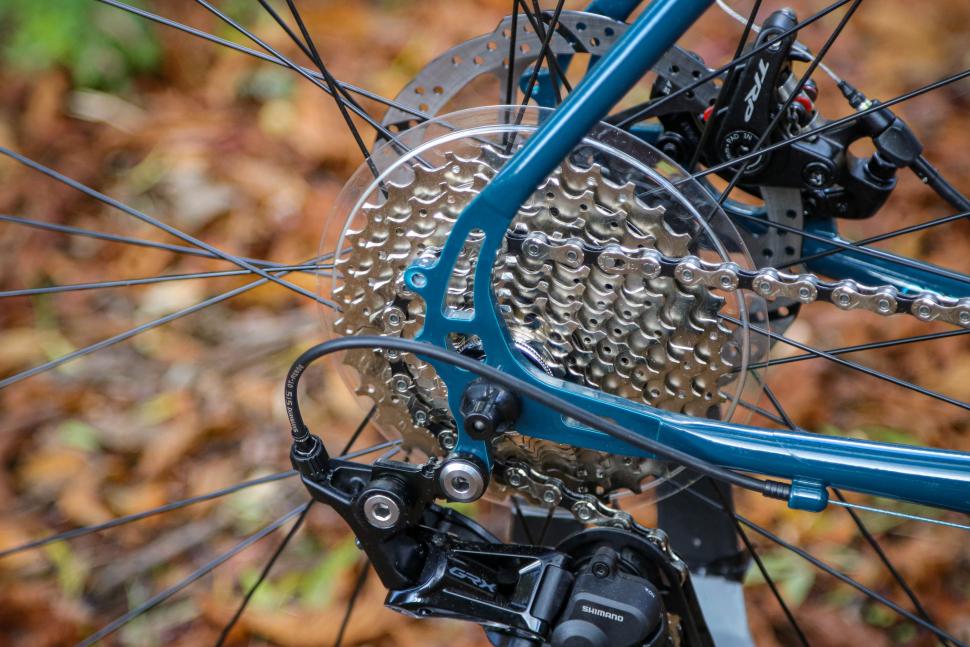
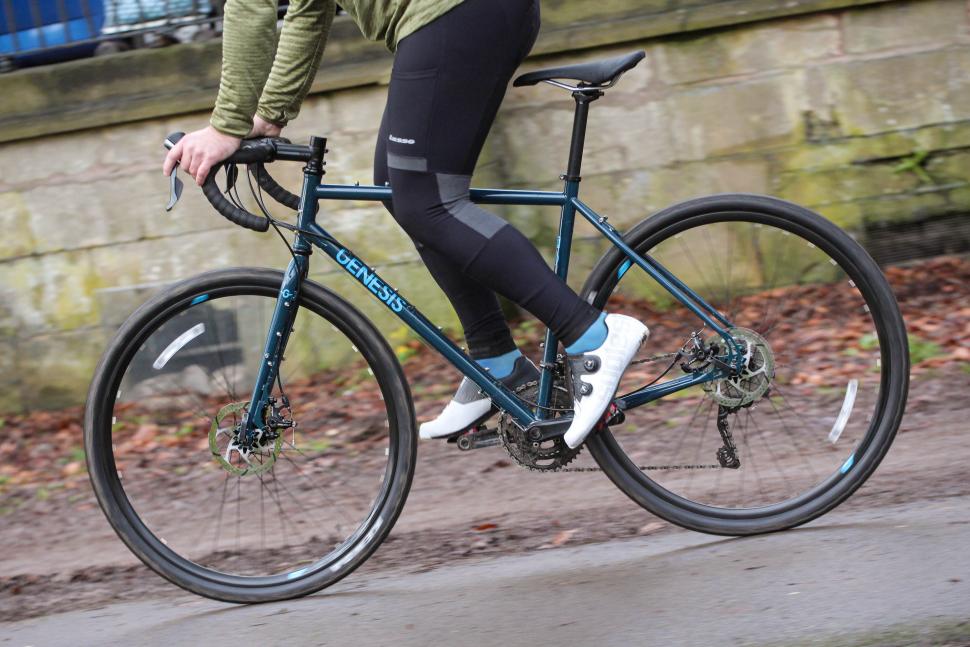

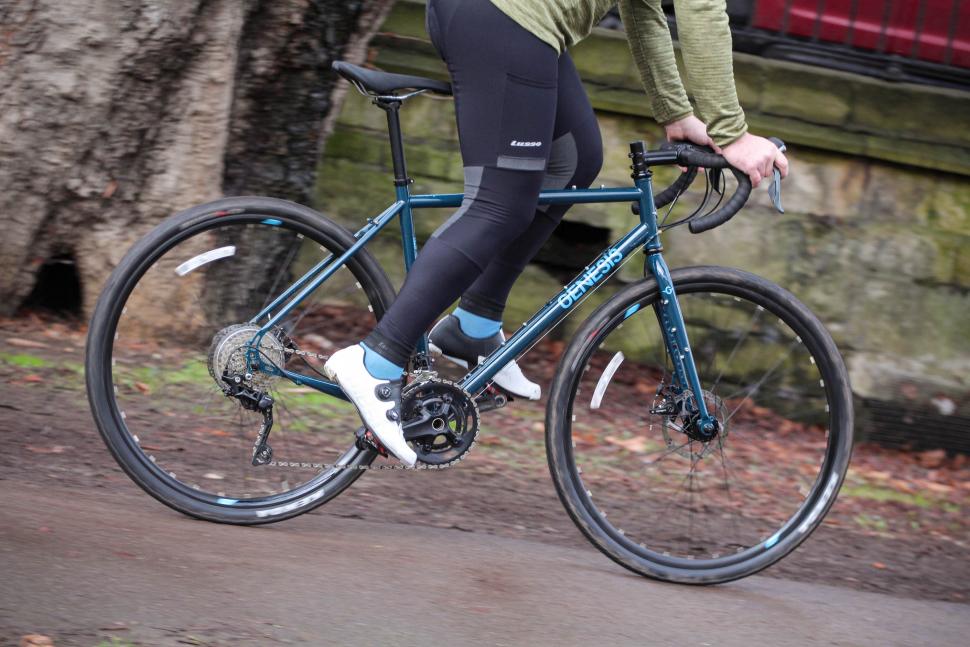
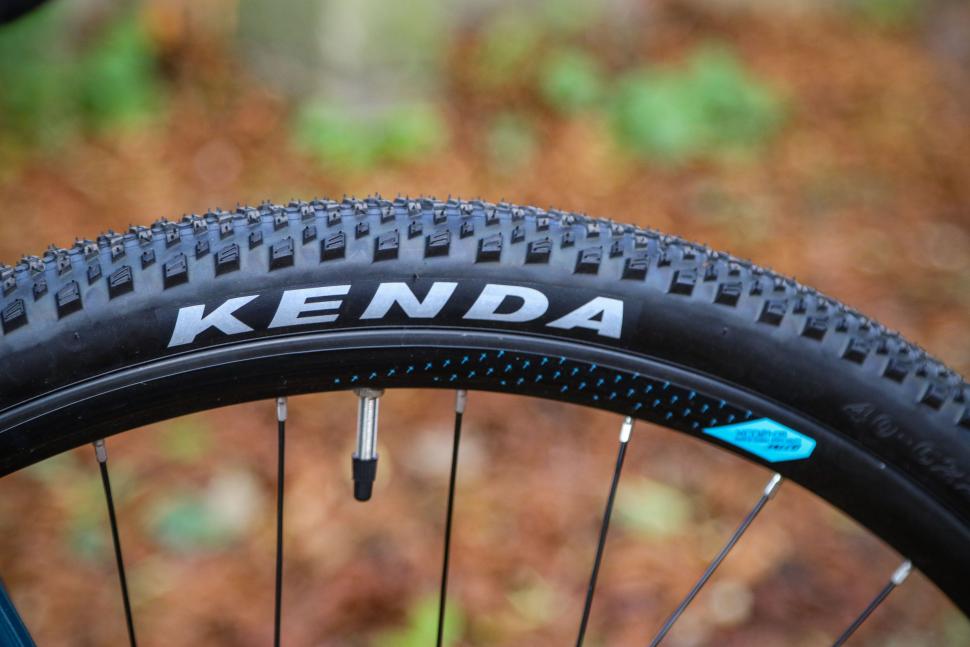
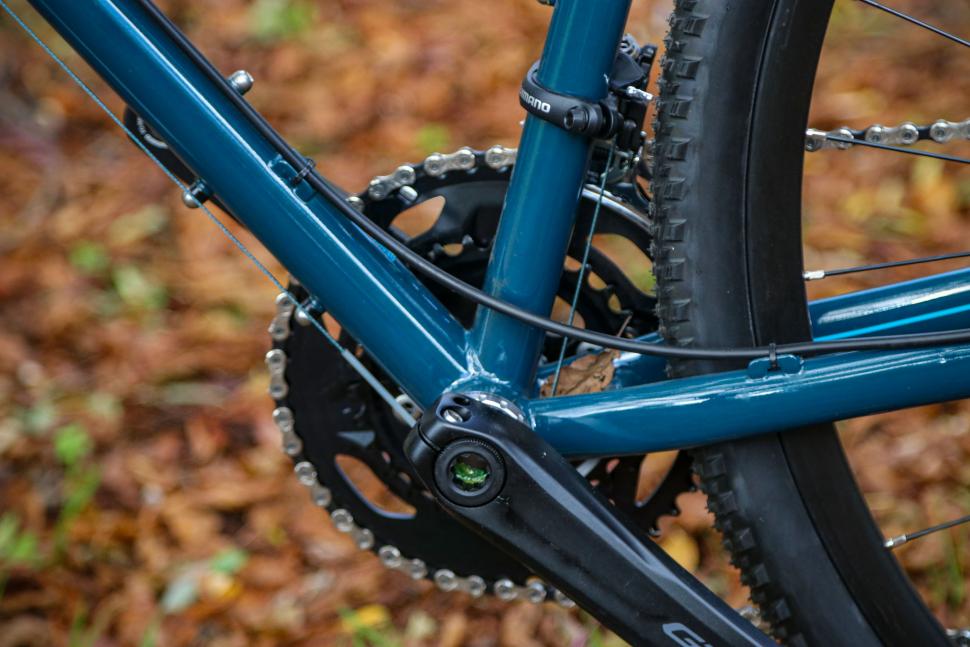
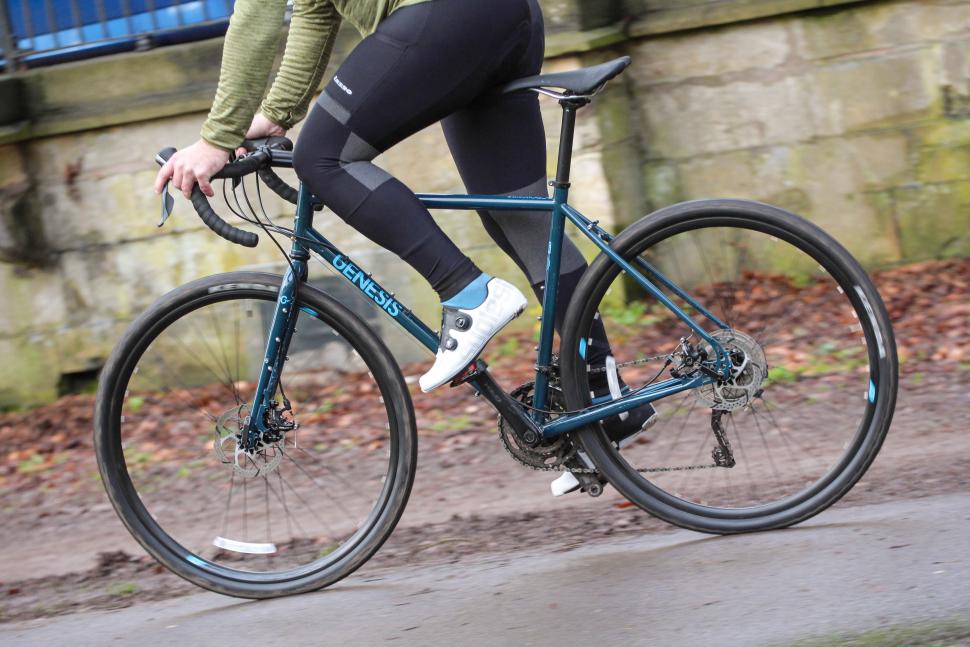
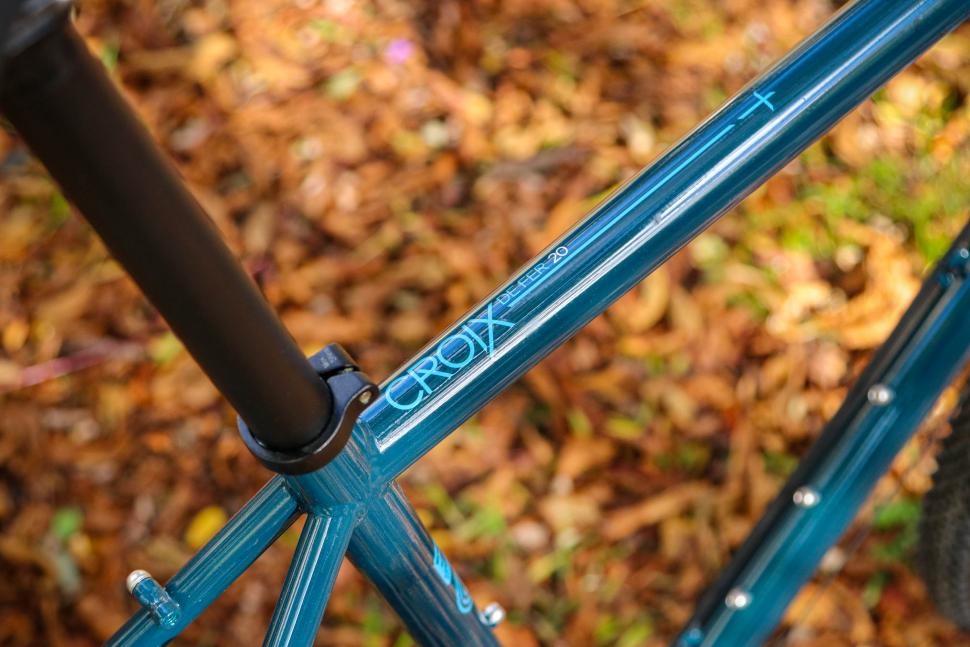
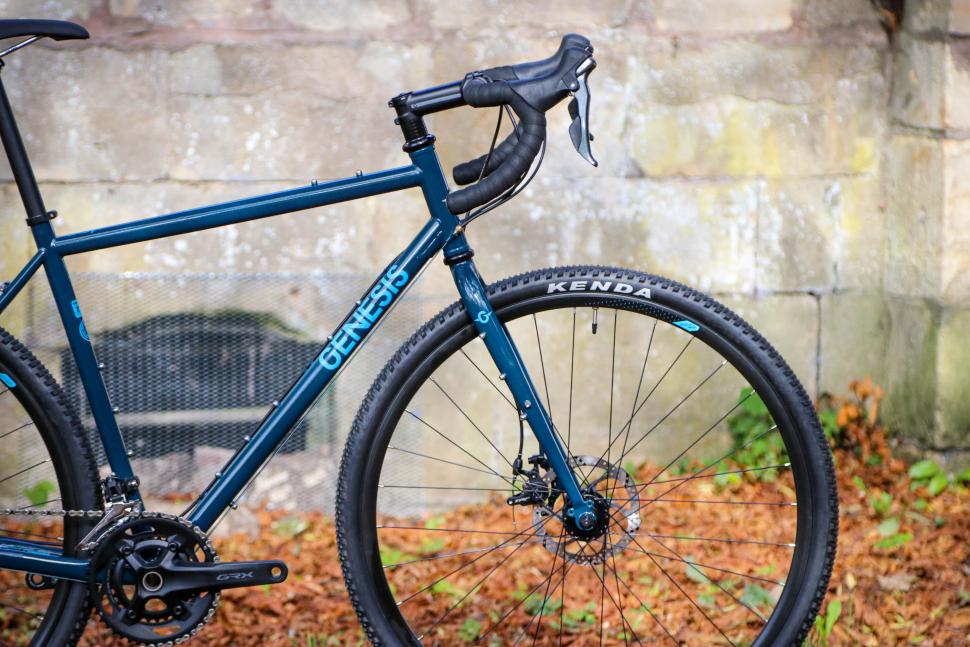
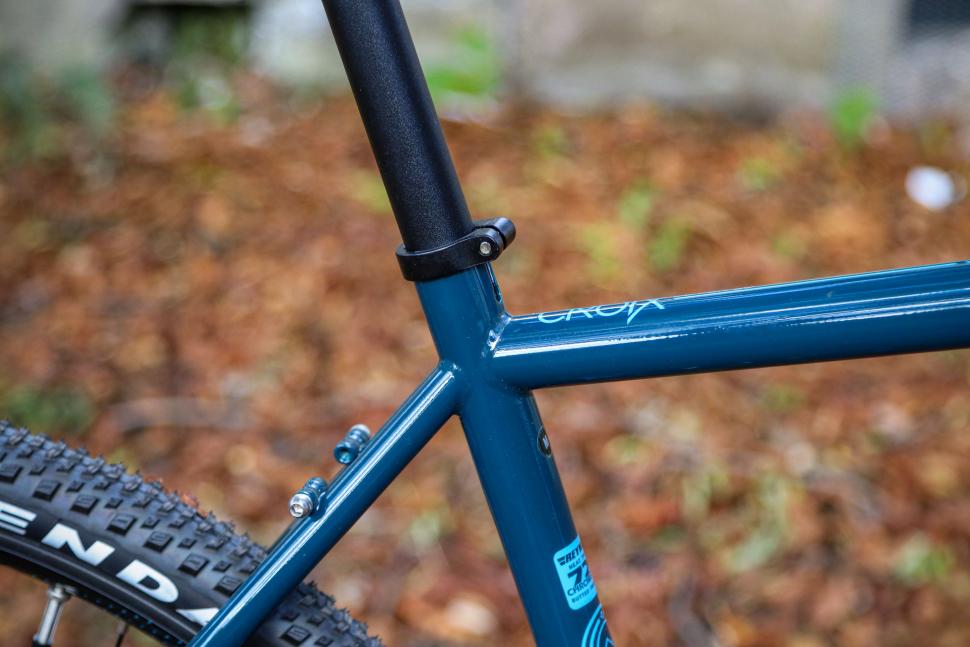
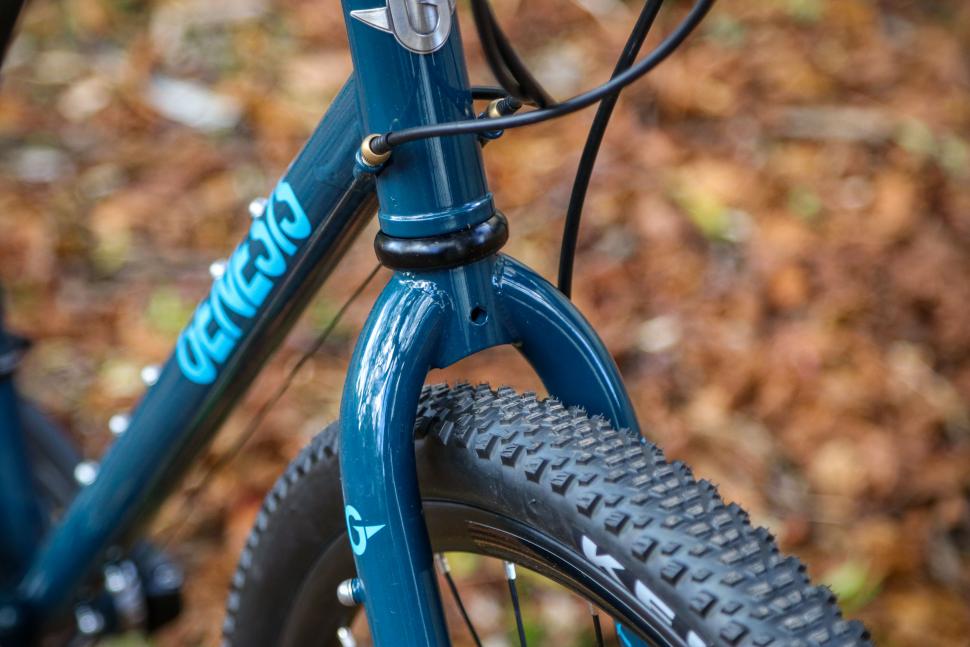

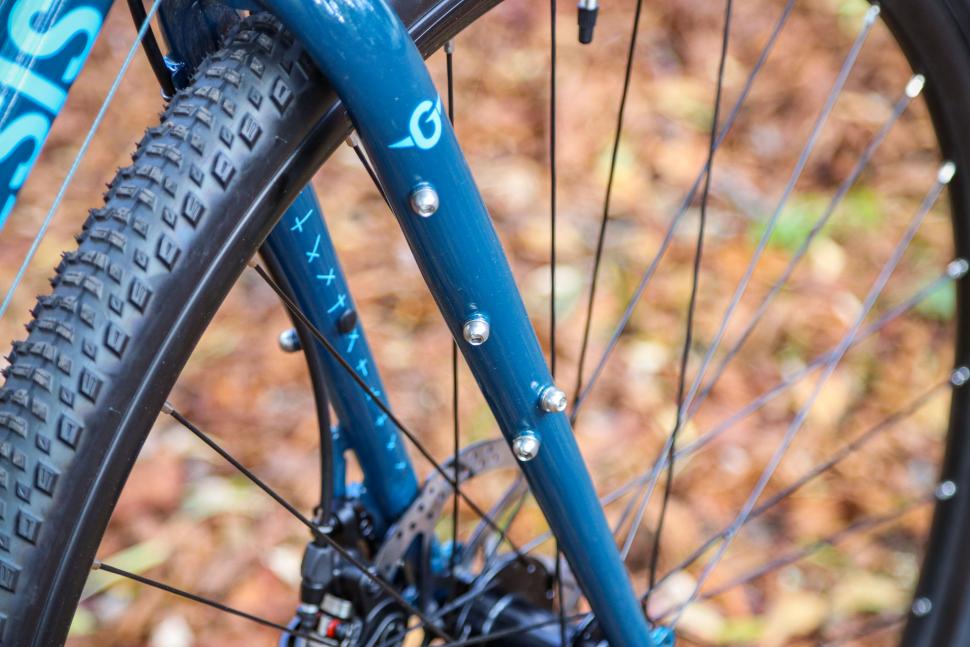
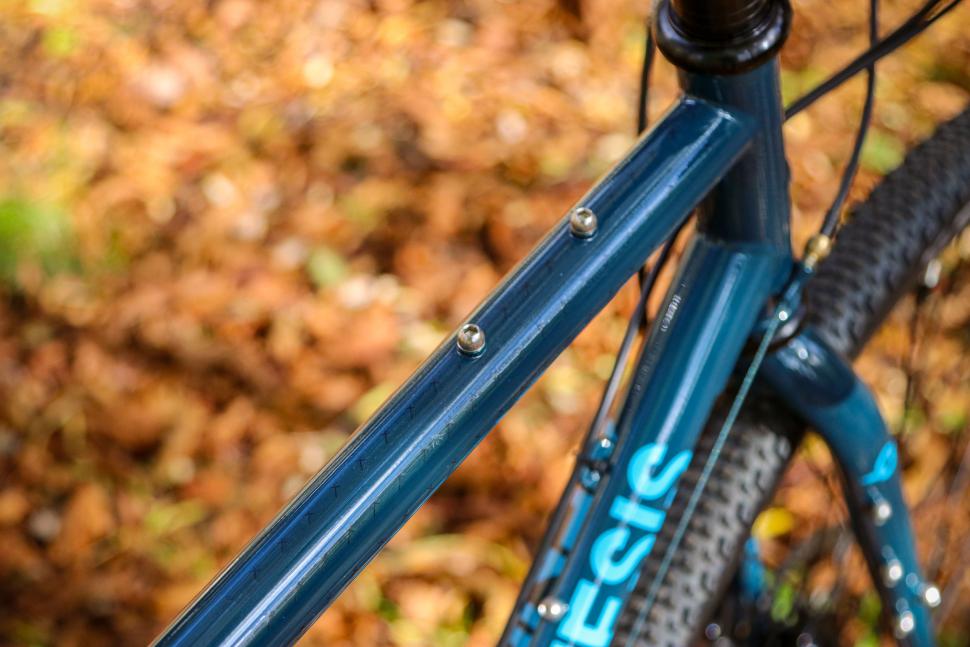


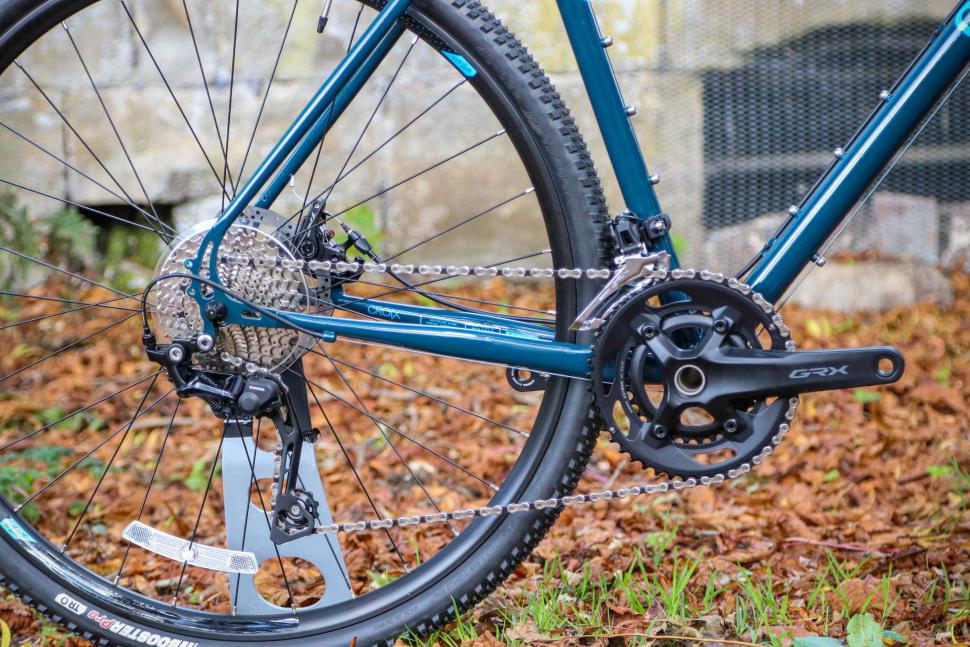

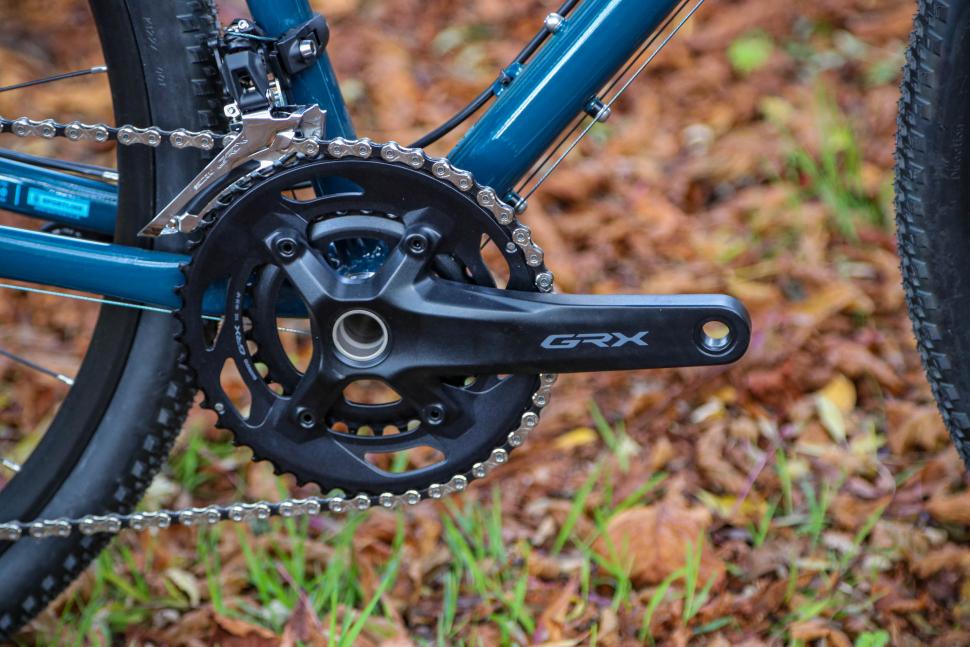
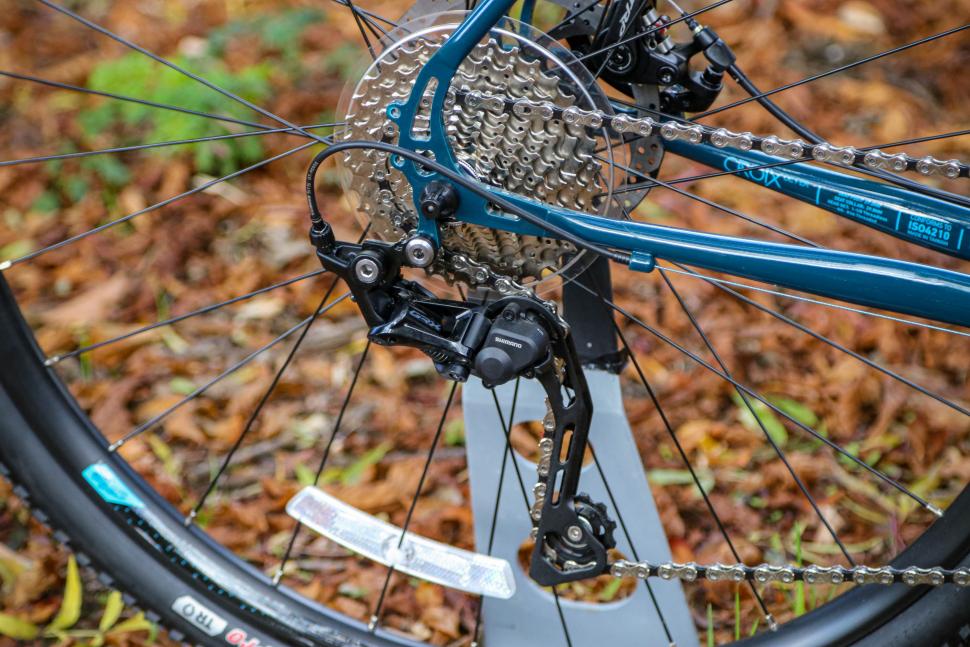

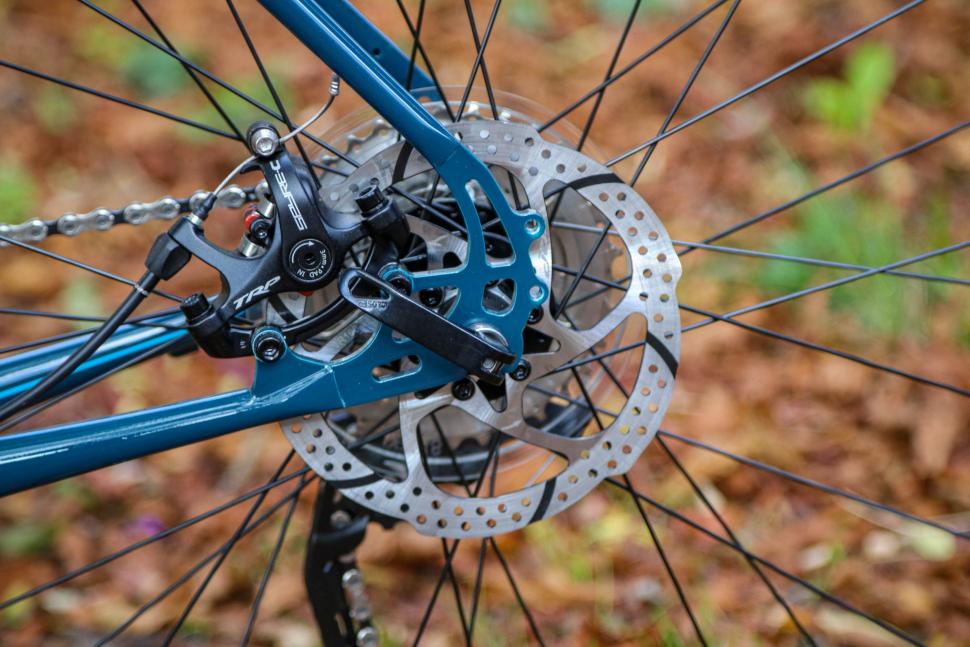
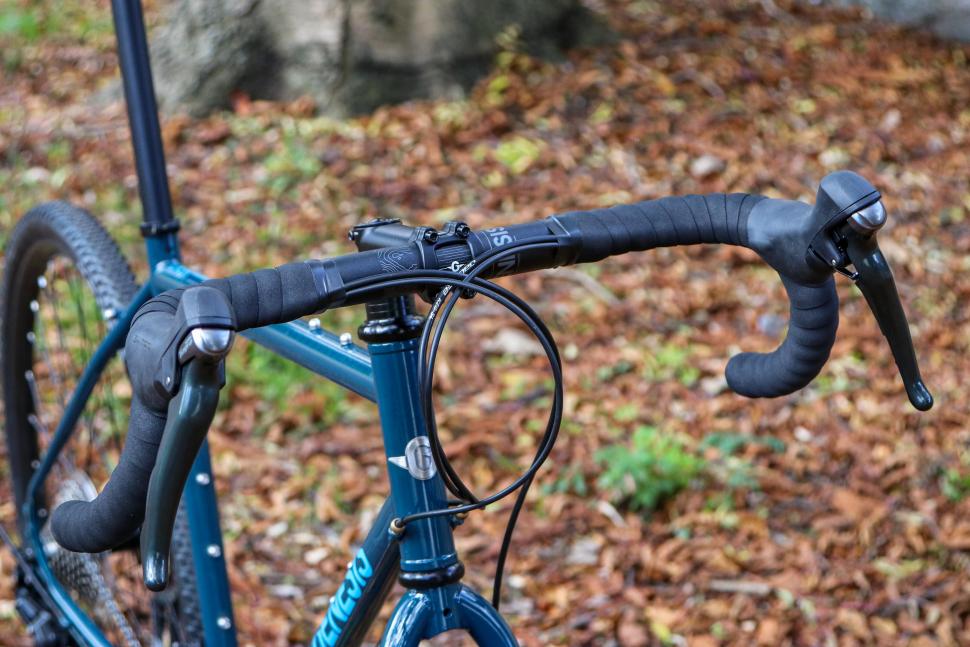
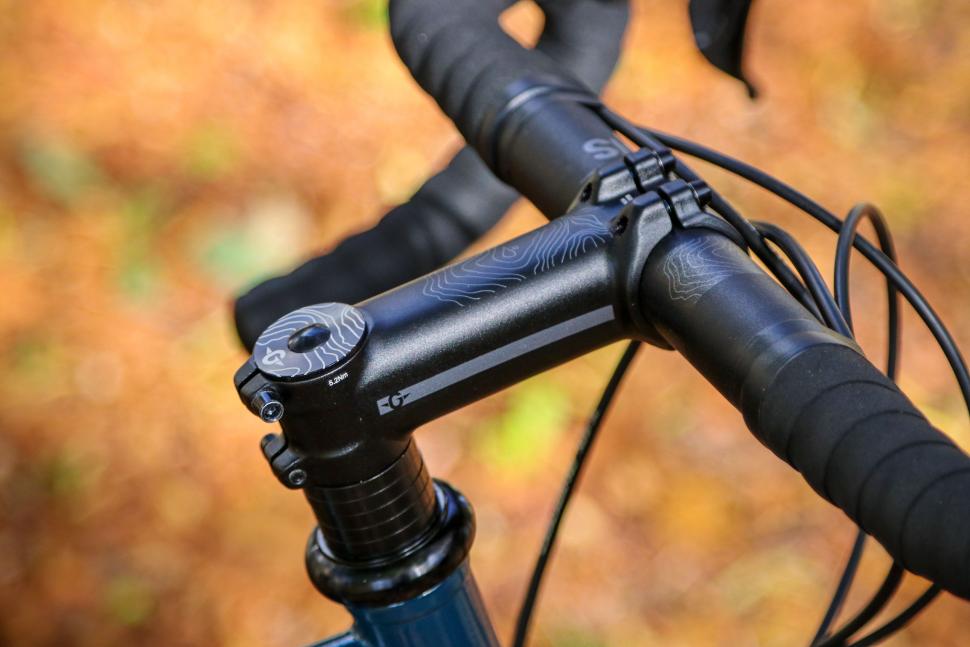


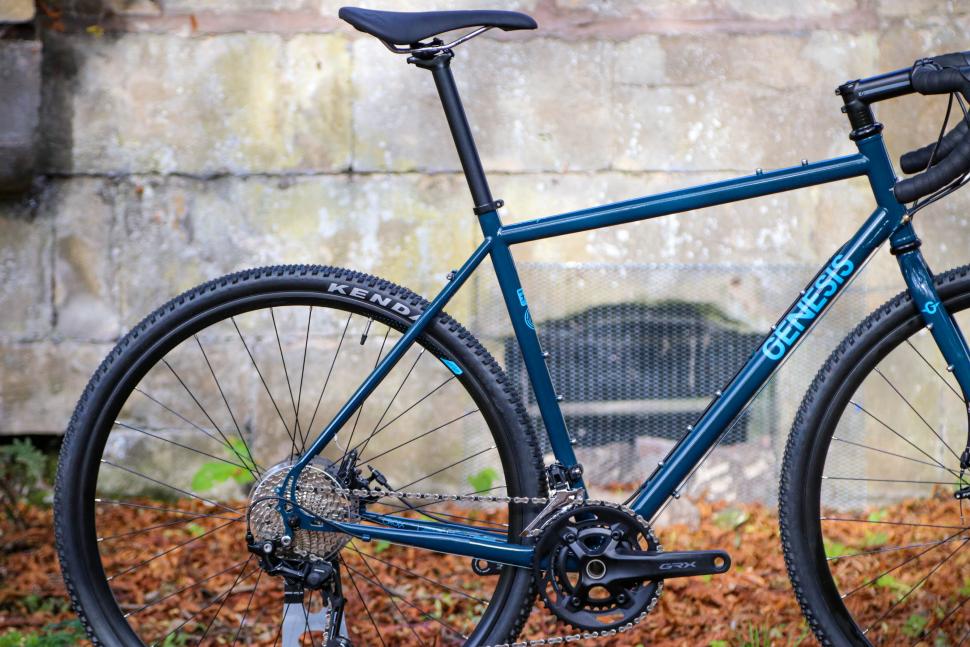


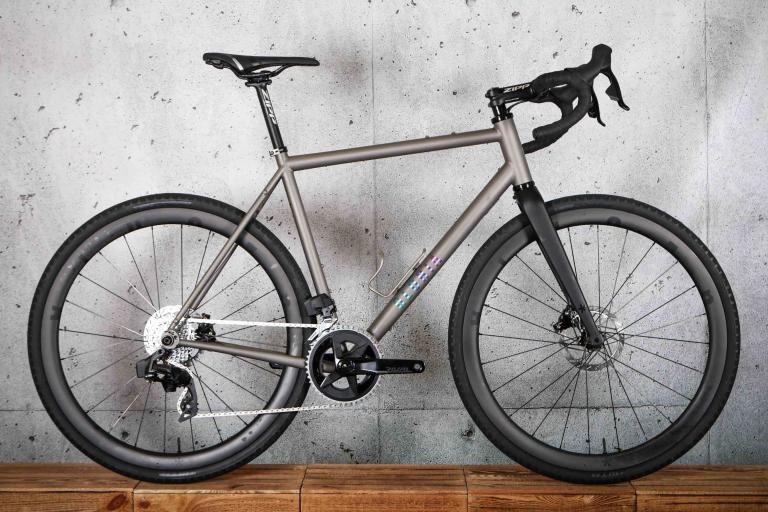
Add new comment
9 comments
Jesus, I had a steel bike lighter than this in the 90's, the world has gone mad bikes are getting heavier. Maybe they filled the tubes full of sand for a laugh?
The 2021 Croix de Fer range is a bit of a mess. The CdF 30 has thru axles and flat mount Spyres so I don't understand why they've put post mount Spyres on the CdF 20 - the calipers cost the same regardless of format. Well actually I do because it all ties in with wanting to offer a frameset for people who want to re-use existing QR wheels. That frameset had to be as cheap as possible so it only uses 725 for the main tubes. The 30 and above use the higher level frameset which claims to use 725 for all the tubes (fork blades excepted) although you wouldn't know it from the frame stickers.
To hit as many price points as possible they could either make two versions of the cheap frame, one with QRs and one with flat mounts or saddle customers with a naff compromise. I guess they must have come to the conclusion that people wanting to re-use QR wheels would also be re-using post mount brakes or else why not just put flat mounts on the cheap frame?
Whatever their commercial reasonings the new frame looks like a good bikepacking option with the extra braze-ons and increased tyre clearance. However at £799.99 for the thru axle/flat mount version it's getting dangerously close in price to the well thought out and nicer looking Fairlight Faran 2.0 although that's had a price increase very recently. I think it was £899 when I first looked at it late last year and now it's £949. Also, it uses a notionally inferior mix of 631 and 4103 tubes.
Only the CDF 10 and 20 use QRs and IS mounts (for ease of repair in the wilds). The 30, 40, 50 and Ti models use bolt thru axles and flat mounts.
Spyres are great brakes but require good set up to maximise their performance - the front brake in particular looks like the actuation arm will be too far through it's strike when the brakes bite which would give disappointing results.
I would not trust mechanical disc brakes on a bike that could be fully loaded for touring: they're worse than rim brakes. Imagine heading down Le Tourmalet on that? I'd go so far as to say that it would be unsafe.
This is a crowded market-place and a little more effort here would make an interesting bike, but the cheap groupset and other low-tech, out of date, accoutrements let it down, badly.
Why is that? I'd have thought a loaded tourer was the last refuge for mechanical discs, where their lack of hydraulic fluid to boil is actually an advantage.
You say in the text the brakes are flat mount.
They look to me like they are post mount with adapters to allow them to fit the reidiculously out of date IS mounts on the frame.
Almost all other manufacturers have switched or are switching to thru axles...which has been the standard for a few years now. No excuse for a 2021 bike to have them imho, though wheels are still available of course.
weird decision. Looks a nice bike otherwise
Not sure why the reviewer is so bothered about QR wheels. They are perfectly fine for anything that anyone is likely to do on a bike of this type. Considering QR wheels were the standard on MTB bikes until recently the risk of them rattling loose is negligible if you use them correctly, and I'm not talking cranking on them until your hands bleed. And if you look at the fork, they are pretty heavy and the drop-outs are angled forwards so that any pivot around the brake caliper will seat the axle into the drop-out rather than lift it out. Also, there are loads of QR wheels or a suitable level for this bike available.
It just feels a bit backwards looking, Thru axles are becomming the standard on any disc bike, and there may be plenty of wheels available with QR adaptors, I'm not sure how long that's going to be the case. It seems as though the existing previous models had QRs so they didn't bother to update it.